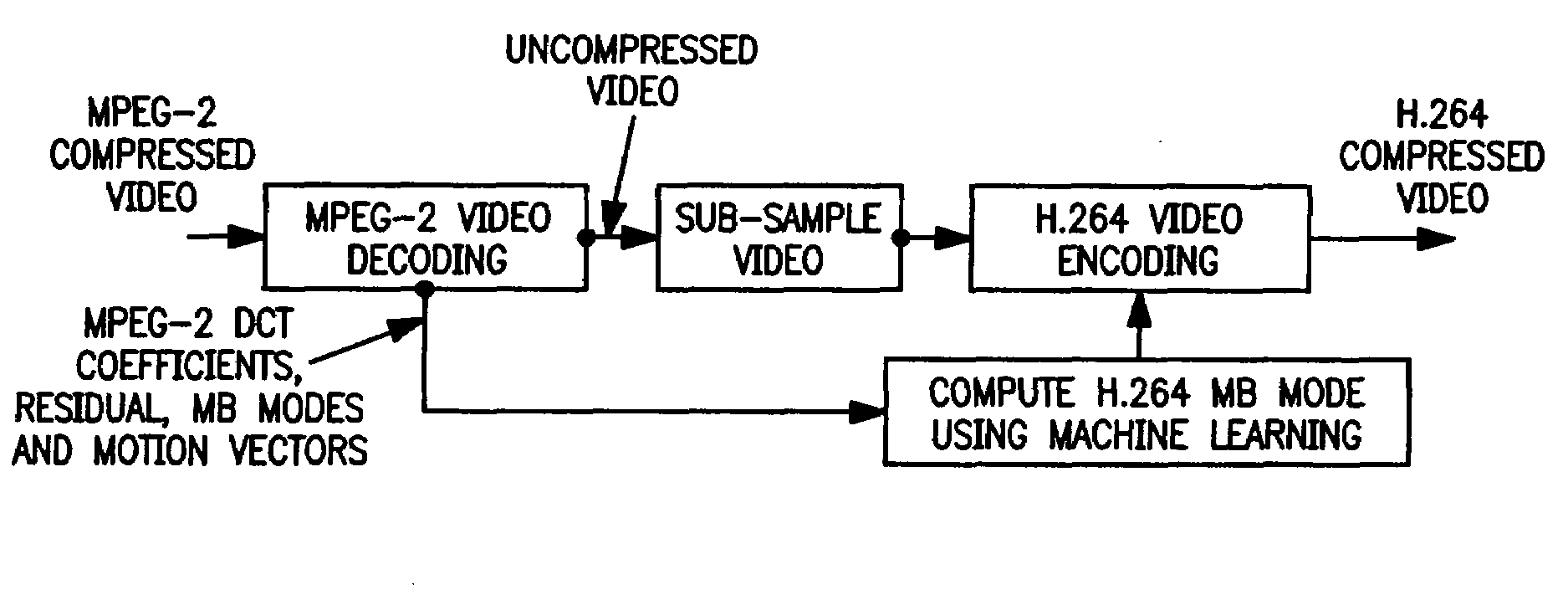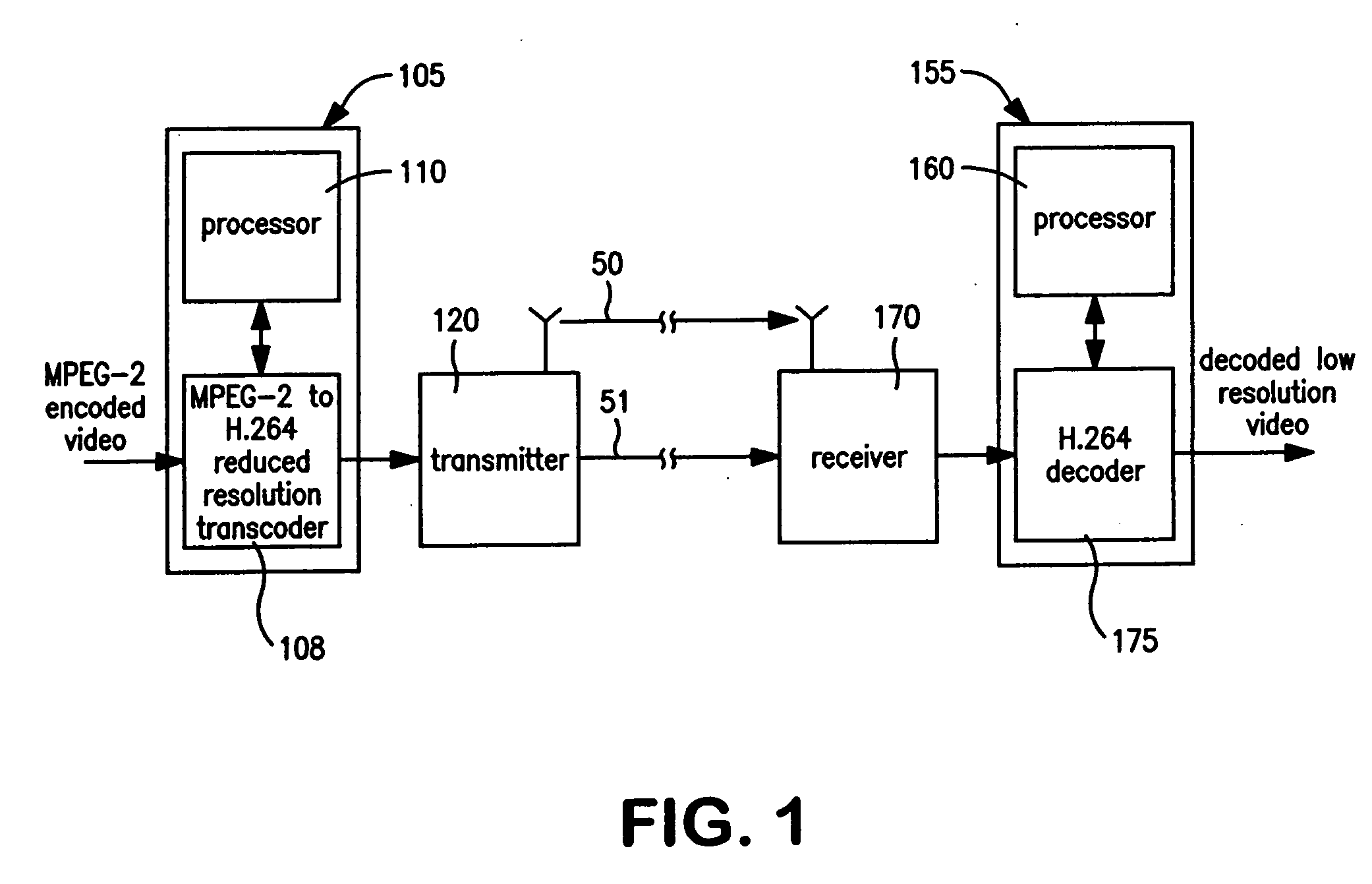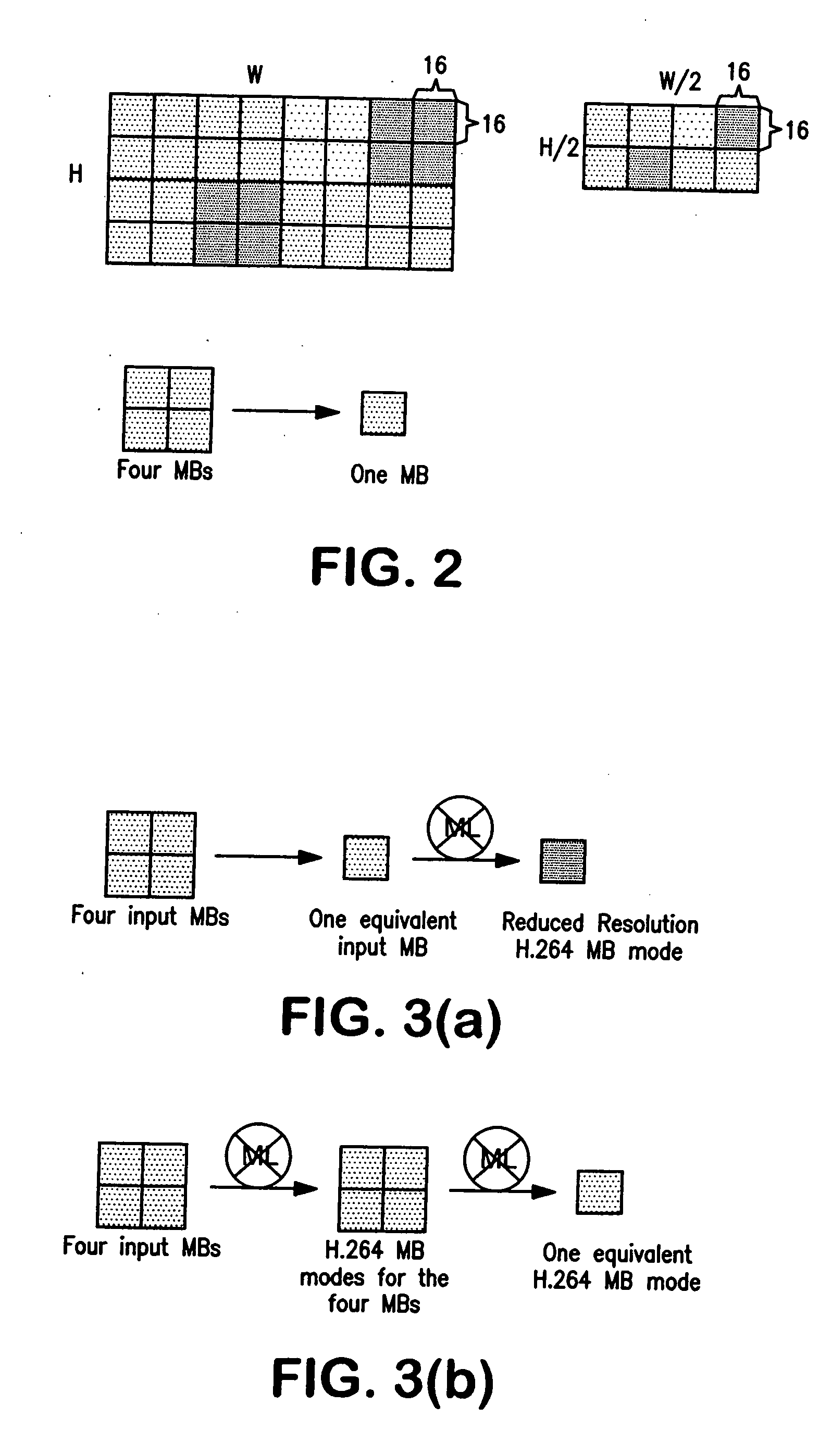Reduced resolution video transcoding with greatly reduced complexity
a video transcoding and greatly reduced technology, applied in the field of video transcoding with greatly reduced complexity, can solve the problems of increasing the complexity of encoding and decoding, unable to use the same encoded video content for all applications, and the high bitrate video used for a digital tv broadcast cannot be used for streaming video to a mobile terminal, so as to facilitate subsequent encoding and reduce complexity
- Summary
- Abstract
- Description
- Claims
- Application Information
AI Technical Summary
Benefits of technology
Problems solved by technology
Method used
Image
Examples
Embodiment Construction
[0028]FIG. 1 is a block diagram of an example of the type of systems that can be advantageously used in conjunction with the invention. Two processor-based subsystems 105 and 155 are shown as being in communication over a channel or network, which may include, for example, any wired or wireless communication channel such as a broadcast channel 50 and / or an internet communication channel or network 51. The subsystem 105 includes processor 110 and the subsystem 155 includes processor 160. When programmed in the manner to be described, the processor subsystems 105 and / or 155 and their associated circuits can be used to implement embodiments of the invention. Also, it will be understood that plural processors can be used at different times in performing different functions. The processors 110 and 160 may each be any suitable processor, for example an electronic digital processor or microprocessor. It will be understood that any programmed general purpose processor or special purpose pro...
PUM
 Login to View More
Login to View More Abstract
Description
Claims
Application Information
 Login to View More
Login to View More - R&D
- Intellectual Property
- Life Sciences
- Materials
- Tech Scout
- Unparalleled Data Quality
- Higher Quality Content
- 60% Fewer Hallucinations
Browse by: Latest US Patents, China's latest patents, Technical Efficacy Thesaurus, Application Domain, Technology Topic, Popular Technical Reports.
© 2025 PatSnap. All rights reserved.Legal|Privacy policy|Modern Slavery Act Transparency Statement|Sitemap|About US| Contact US: help@patsnap.com



